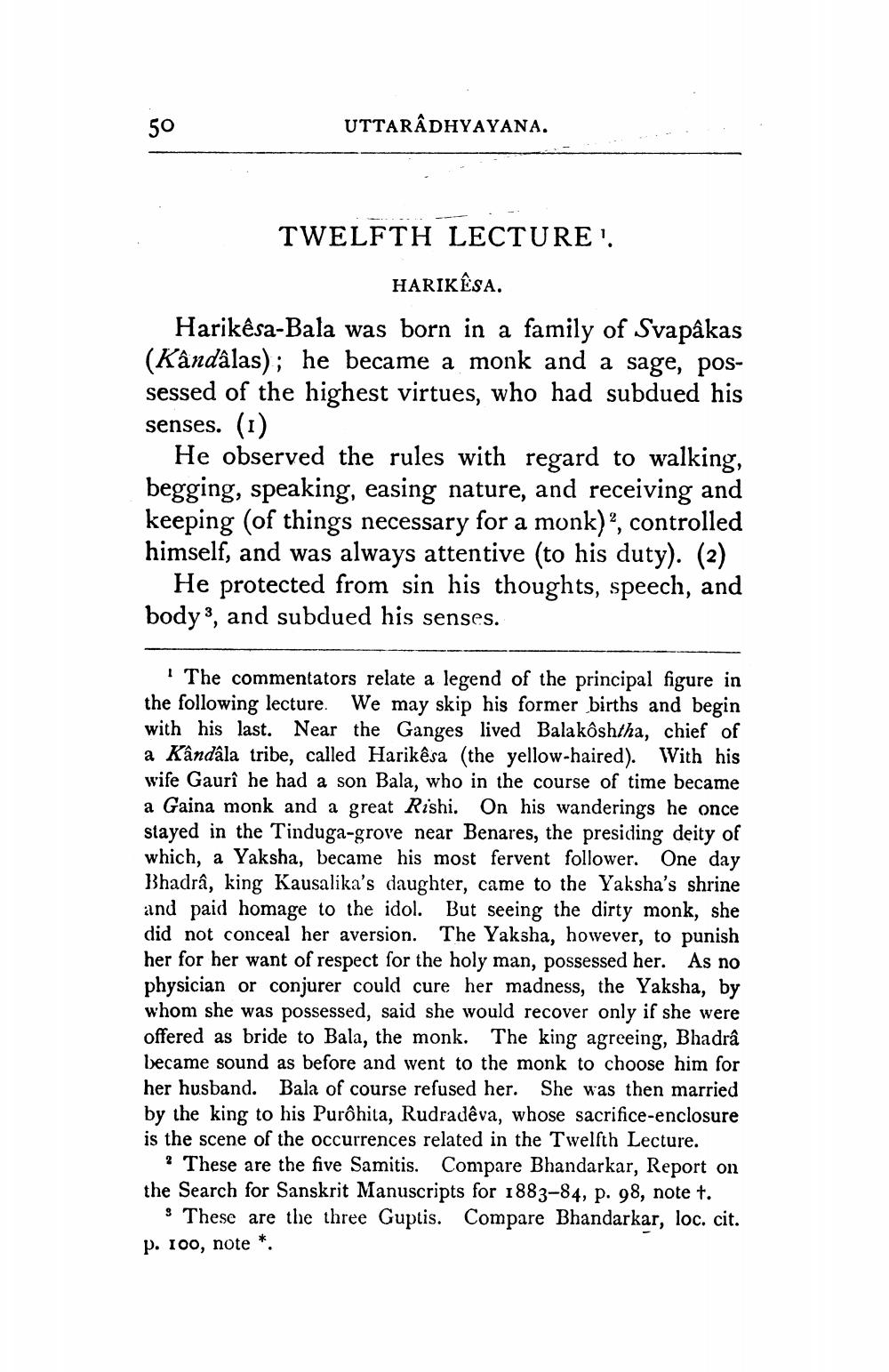________________
50
UTTARADHYAYANA.
TWELFTH LECTURE'.
HARIK@SA. Harikësa-Bala was born in a family of Svapâkas (Kândâlas); he became a monk and a sage, possessed of the highest virtues, who had subdued his senses. (1)
He observed the rules with regard to walking, begging, speaking, easing nature, and receiving and keeping (of things necessary for a monk)”, controlled himself, and was always attentive (to his duty). (2)
He protected from sin his thoughts, speech, and body 3, and subdued his senses.
"The commentators relate a legend of the principal figure in the following lecture. We may skip his former births and begin with his last. Near the Ganges lived Balakôshtha, chief of a Kândala tribe, called Harikêsa (the yellow-haired). With his wife Gaurî he had a son Bala, who in the course of time became a Gaina monk and a great Rishi. On his wanderings he once stayed in the Tinduga-grove near Benares, the presiding deity of which, a Yaksha, became his most fervent follower. One day Bhadrâ, king Kausalika's daughter, came to the Yaksha's shrine and paid homage to the idol. But seeing the dirty monk, she did not conceal her aversion. The Yaksha, however, to punish her for her want of respect for the holy man, possessed her. As no physician or conjurer could cure her madness, the Yaksha, by whom she was possessed, said she would recover only if she were offered as bride to Bala, the monk. The king agreeing, Bhadrâ became sound as before and went to the monk to choose him for her husband. Bala of course refused her. She was then married by the king to his Purohita, Rudradêva, whose sacrifice-enclosure is the scene of the occurrences related in the Twelfth Lecture.
? These are the five Samitis. Compare Bhandarkar, Report on the Search for Sanskrit Manuscripts for 1883-84, p. 98, note t.
These are the three Guptis. Compare Bhandarkar, loc. cit. P. 100, note *




